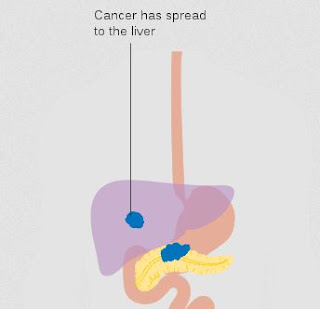THE PANCREAS
The Pancreas is one of the distinctive organs. The Pancreas function as both exocrine as well as an endocrine gland. It produces hormones into the blood (endocrine gland) and secretes enzymes viaducts (exocrine gland). It is a portion of the digestive system.
 |
| LOCATION OF THE PANCREAS |
Image Source : Wikimedia Commons
 |
| STRUCTURE OF THE PANCREAS |
Blausen.com staff (2014). "Medical gallery of Blausen Medical 2014". WikiJournal of Medicine 1 (2). DOI:10.15347/wjm/2014.010. ISSN 2002-4436.
Image Source : Wikimedia Commons
The Pancreas is a 6-inch long, narrow, soft organ located between the stomach and spleen i.e., it lies deep in the abdomen. The Pancreas functions as both as an endocrine and exocrine. More than 90% of the cells are present in the digestive system, and nearly or only 5% in the endocrine.
The Pancreas function as exocrine emits enzyme, which aids for good digestion and as endocrine generates hormones to stabilize sugar level in the blood.
HORMONES AND FUNCTIONS
Pancreas as Exocrine: The exocrine cells produce pancreatic juice that flow via a pancreatic duct into the small intestine of the digestive system. The duodenum utilizes the Pancreatic juice for breaking down the food materials. This juice neutralizes the acid present in the stomach as well.
 |
| PANCREAS AS EXOCRINE AND ENDOCRINE |
Image Source : Wikimedia Commons
Pancreas as Endocrine: The endocrine cells secrete the hormones into the bloodstream. The endocrine cells, which are present in the Pancreas grouped. The grouped cells look like leaf or islands when seen under the microscope hence, referred to as ‘pancreatic islets’ or ‘islets of Langerhans’ (named after the scientist).
There are three types of endocrine cells. Alpha cells secrete glucagon; Beta cells secrete insulin, and Delta cells stop the secretion of glucagon and insulin. The pancreatic hormones are responsible for balancing sugar and salt levels in the body. The hormones are:
i) Gastrin: This hormone assists in digestion by triggering particular cells to generate acid in the stomach.
ii) Glucagon: This hormone stimulates the liver to transform glucagon into glucose, thus raising the blood glucose level in the body.
iii) Insulin: The role of insulin is to make the body tissue cells absorb the glucose from carbohydrates that are present in the food and use it as energy, or it stores glucose for the future. Insulin declines the glucose level in the body.
iv) Somatisation: The role of this hormone is to balance the sugar and salt level in the body when insulin and glucagon level varies.
v) Vasoactive intestinal peptide (VIP): The role of this hormone is to trigger the intestinal cells to release water and salt into the intestine when required by the body.
DISORDERS AND TREATMENT
The disease or disorder arises due to the irregularity of sugar and salt levels in the body.
i) Diabetes-Type 1: Diabetes-Type 1 disease is due to insulin deficiency. The body is ineffective in producing enough insulin to sustain the glucose level in the body.
The treatment is that the patients have to take insulin manually by injecting it into the body as prescribed by the physicians.
ii) Diabetes-Type 2: There are two factors.
(a) The body generates sufficient insulin, but the body is not capable of utilizing it.
(b) The body might not generate adequate insulin to sustain the glucose level in the body.
Diet, exercises, control of food, lifestyle manages can prevent this disease.
iii) Hyperglycemia: Hyperglycemia is due to the hypersecretion of the glucagon hormone (High blood glucose level).
iv) Hypoglycemia: This disease is due to the hypersecretion of insulin (Low blood glucose level).
v) Pancreatic Cancer: The reason for Pancreatic Cancer is that the indefinable growth of mutated cells resulting in the formation of a tumour, but still, the exact cause is unknown. Cancer occurs in the cells of the pancreas.
 |
| PANCREATIC CANCER |
Image Source : Wikimedia Commons
Cancer initiates in the tissues of the pancreas. The cancer cells extend swiftly, it is determined very slowly since it is hard to foretell, and there will be no indications in the beginning stage. The later signs may be weight loss, jaundice, back pain, pain in the abdomen, liver or Gall bladder expansion, blood clots, diabetes, loss of appetite, etc.
Pancreatic cancer staging (TNM classification)
T : refers to size of the existing Tumour
N : refers to adjacent area/part lymph Nodes
M : refers to far Metastasis (growth of cancer from one region to other part of the body)
 |
| Pancreatic cancer in nearby lymph nodes – Stage N1 |
 |
| Pancreatic cancer metastasized – stage M1 |





No comments: